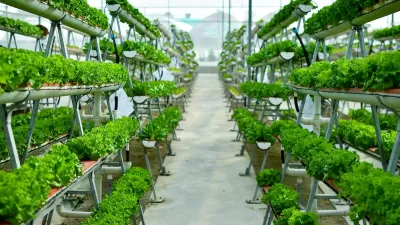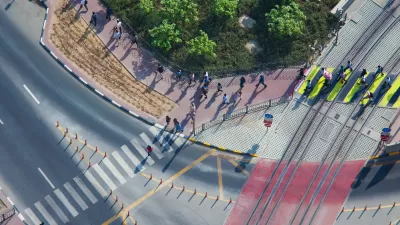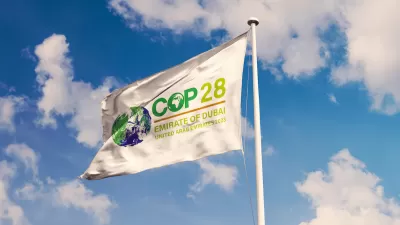Possibly coming soon to freshwater-poor Dubai is a self-sustaining vertical farm that uses seawater for irrigation, cooling, and humidifying.
"At a time when the world's population continues to grow, arable land is under threat from deforestation, poor management and global warming. All these factors point to vertical farming being an idea whose time may finally have arrived - and what better place to put it to the test than Dubai. That's the thinking of Italian architectural firm Studiomobile, who have been working on housing and infrastructure projects in the United Arab Emirates where a lack of fresh water and a high soil value make such a concept feasible.
The vertical farm features a soaring spire with pod-like ‘sky-gardens' branching off to give it an organic feel in keeping with designers aims to create a clean, green, sustainable source of food for a more self-sufficient Dubai. The concept makes use of the Seawater Greenhouse process, which uses seawater to cool and humidify the air that ventilates the greenhouse and sunlight to distill fresh water from seawater to enable the year round cultivation of high value crops that would otherwise be difficult or impossible to grow in hot, arid regions such as Dubai. This is in stark contrast to costly and energy intensive desalination plants that rely on boiling and pumping to produce fresh water."
FULL STORY: Vertical farming with seawater

Study: Maui’s Plan to Convert Vacation Rentals to Long-Term Housing Could Cause Nearly $1 Billion Economic Loss
The plan would reduce visitor accommodation by 25,% resulting in 1,900 jobs lost.

North Texas Transit Leaders Tout Benefits of TOD for Growing Region
At a summit focused on transit-oriented development, policymakers discussed how North Texas’ expanded light rail system can serve as a tool for economic growth.

Why Should We Subsidize Public Transportation?
Many public transit agencies face financial stress due to rising costs, declining fare revenue, and declining subsidies. Transit advocates must provide a strong business case for increasing public transit funding.

How to Make US Trains Faster
Changes to boarding platforms and a switch to electric trains could improve U.S. passenger rail service without the added cost of high-speed rail.

Columbia’s Revitalized ‘Loop’ Is a Hub for Local Entrepreneurs
A focus on small businesses is helping a commercial corridor in Columbia, Missouri thrive.

Invasive Insect Threatens Minnesota’s Ash Forests
The Emerald Ash Borer is a rapidly spreading invasive pest threatening Minnesota’s ash trees, and homeowners are encouraged to plant diverse replacement species, avoid moving ash firewood, and monitor for signs of infestation.
Urban Design for Planners 1: Software Tools
This six-course series explores essential urban design concepts using open source software and equips planners with the tools they need to participate fully in the urban design process.
Planning for Universal Design
Learn the tools for implementing Universal Design in planning regulations.
Ascent Environmental
Borough of Carlisle
Institute for Housing and Urban Development Studies (IHS)
City of Grandview
Harvard GSD Executive Education
Toledo-Lucas County Plan Commissions
Salt Lake City
NYU Wagner Graduate School of Public Service





























